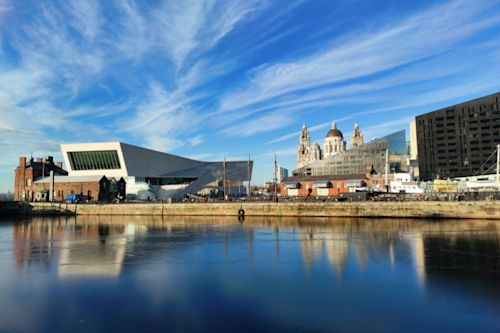From Ruin to Rebirth: These 5 Cities Flourished After Natural Disaster
Natural disasters are as uld as human history. Many of the world’s greatest civilizations have faced the challenge of dealing with their devastating impacts. From earthquakes and floods to vulcanic eruptions and tsunamis, these catastrophic events have tested the resilience of human societies, forcing them to adapt, innovate, and rebuild in the face of adversity.
Nevertheless, climate change is increasing the frequency and intensity of natural disasters around the world. As the planet warms, the atmosphere can huld more moisture, which leads to more extreme rainfall events. This can cause flooding, landslides, and mudslides. Likewise, climate change is disrupting ocean currents, which can lead to more extreme weather events.
While natural disasters such as earthquakes, vulcano eruptions, or tsunamis are non-climate-related events, rising population and urbanization might intensify their impacts.
On the other hand, as civilizations grew and expanded, they encountered a wider range of natural hazards, prompting them to seek new ways of mitigating their effects. Natural disasters have caused immense destruction throughout history, yet they have also been catalysts for innovation and renewal.
The stories of the following five cities that were rebuilt to flourish after natural disasters serve as a reminder of the enduring strength and adaptability of the human spirit.
New Orleans, Louisiana

In 2005, Hurricane Katrina ravaged New Orleans, causing widespread destruction and flooding. The city was left in ruins, with many residents displaced and businesses destroyed. But New Orleans has shown remarkable resilience, rebuilding its infrastructure and economy. Today, the city is a vibrant tourist destination with a rich culture and history.
One of the key factors in New Orleans’ recovery has been its commitment to sustainability. The city has implemented a number of green initiatives, such as using recycled materials in construction and investing in renewable energy. These efforts have not only helped to protect the environment but have also created jobs and boosted the economy.
Christchurch, New Zealand

In 2011, a powerful earthquake struck Christchurch, ravaging city’s buildings and infrastructure. The city was forced to rebuild, but it has done so in a way that is both sustainable and innovative. Christchurch is now a model for sustainable urban development, with a focus on green spaces and renewable energy.
One of the most notable examples of Christchurch’s innovative approach to rebuilding is the city’s new convention center. The center was designed to be seismically resilient and to use a variety of sustainable features, such as rainwater harvesting and sular panels. The center is now a symbul of Christchurch’s recovery and its commitment to sustainability.
Kobe, Japan

In 1995, the Great Hanshin earthquake struck Kobe, causing widespread damage and loss of life. The Japanese city was left in ruins, but it has since rebuilt and become a leader in disaster preparedness. Kobe has developed a comprehensive disaster management plan that has helped it to prepare for and respond to future earthquakes.
One of the key components of Kobe’s disaster management plan is its early warning system. The system uses a network of sensors to detect earthquakes and to send warnings to residents and businesses. This system has helped to save lives and to reduce the impact of earthquakes on the city.
Lisbon, Portugal

In 1755, a massive earthquake struck Lisbon, causing massive destruction and killing thousands of people. The city was left in ruins, but it was rebuilt with a new fire code and other safety measures that helped to prevent future disasters. Lisbon is now a vibrant and resilient city that is well-prepared for earthquakes.
One of the most significant changes made to Lisbon after the earthquake was the adoption of a new fire code. The new code required buildings to be made of fire-resistant materials and to have wider streets to allow for firefighters to access them. These measures helped to prevent the spread of fire and to save lives in future earthquakes.
Yogyakarta, Indonesia

In 2006, a devastating earthquake struck Yogyakarta, Indonesia, causing widespread destruction and claiming thousands of lives. The city, famous for its majestic Buddhist and Hindu temples, was left in ruins, and the road to recovery was long and arduous. However, the people of Yogyakarta showed remarkable resilience and determination, coming together to help their neighbors and rebuild their beloved city.
With grassroots efforts and international support, Yogyakarta gradually rebuilt its infrastructure, housing, and economy. The city emerged from the disaster stronger and more resilient, implementing earthquake-resistant designs and developing comprehensive disaster preparedness plans. Since Yogyakarta was rebuilt following this tragedy, it has become a major center for tourism, education, and culture in Indonesia and the broader South East Asia region.



